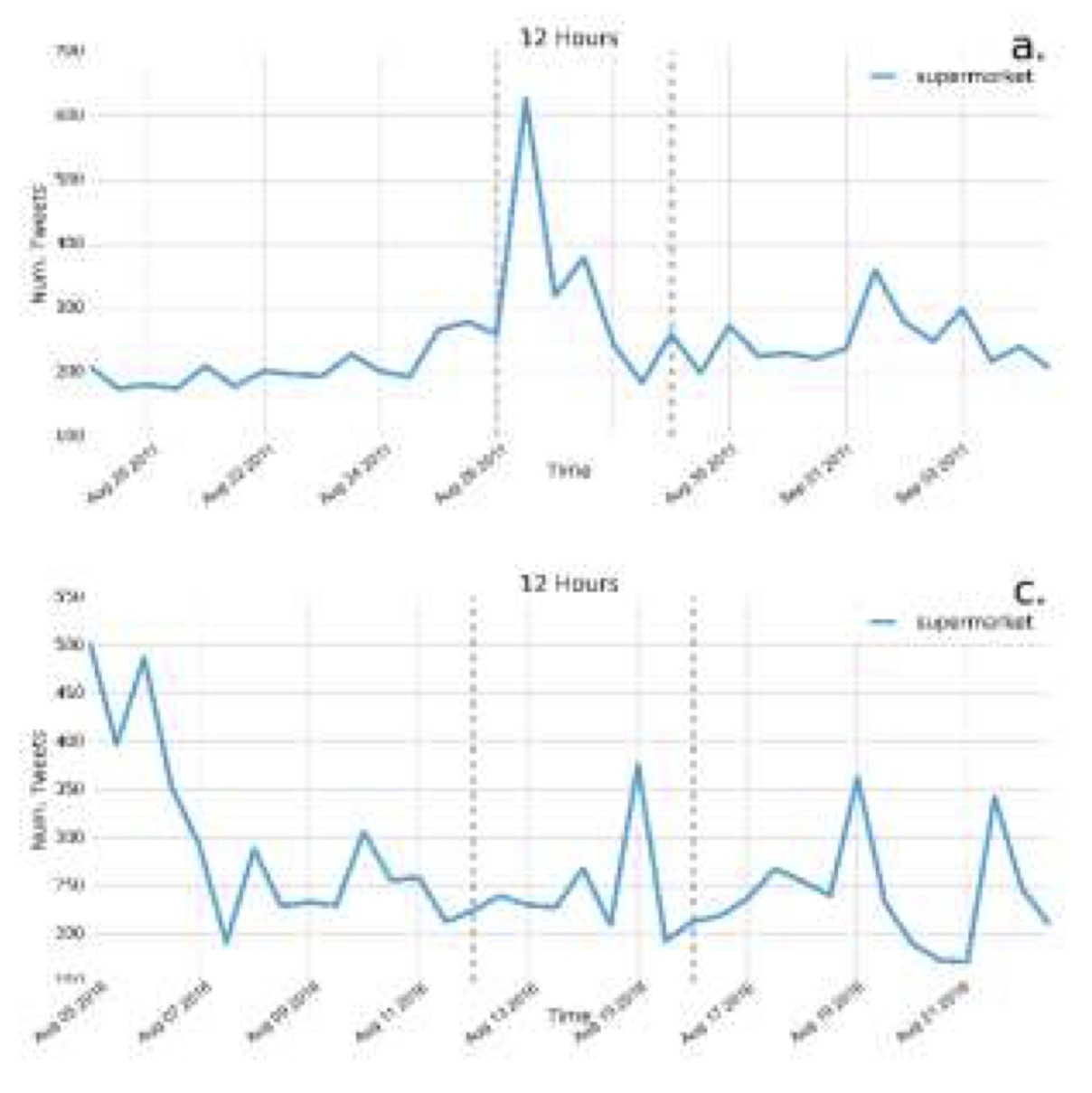Social media usage patterns during natural hazards
M. T. Niles, B. F. Emery, A. J. Reagan, P. S. Dodds, C. M. Danforth
PLOS ONE, 14, 1–16, 2019

Times cited: 150
Abstract:
Natural disasters are becoming increasingly expensive as climate change and development are exposing communities to greater risks. Disaster preparation and recovery are critical for climate change resilience, and social media is being used more and more to communicate before, during, and after disasters. While there is a growing body of research aimed at understanding how people use social media surrounding disaster events, most existing work has focused on a single disaster case study. In the present study, we analyze five of the costliest disasters in the last decade in the United States (Hurricanes Irene and Sandy, two sets of tornado outbreaks, and flooding in Louisiana) through the lens of Twitter. In particular, we explore the frequency of both generic and specific food-security related terms, and quantify the relationship between network size and Twitter activity during disasters. We find differences in tweet volume for keywords depending on disaster type, with people using Twitter more frequently in preparation for Hurricanes, and for real-time or recovery information for tornado and flooding events. Further, we find that people share a host of general disaster and specific preparation and recovery terms during these events. Finally, we find that among all account types, individuals with average sized networks are most likely to share information during these disasters, and in most cases, do so more frequently than normal. This suggests that around disasters, an ideal form of social contagion is being engaged in which average people rather than outsized influentials are key to communication. These results provide important context for the type of disaster information and target audiences that may be most useful for disaster communication during varying extreme events.
- This is the default HTML.
- You can replace it with your own.
- Include your own code without the HTML, Head, or Body tags.
BibTeX:
@article{niles2019a,
author = {Niles, Meredith T. and Emery, Benjamin F. and
Reagan, Andrew J. and Dodds, Peter Sheridan and
Danforth, Christopher M.},
journal = {PLOS ONE},
title = {Social media usage patterns during natural hazards},
year = {2019},
volume = {14},
pages = {1-16},
}